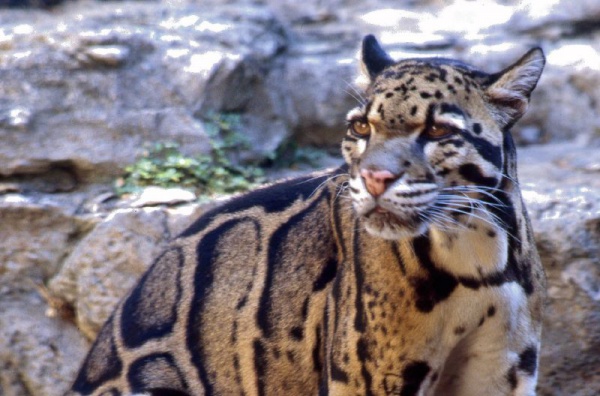Facts About Clouded leopard
The clouded leopard is a captivating medium-sized wild cat inhabiting the Himalayan foothills, Southeast Asia, and southern China. Since 2008, it has been classified as Vulnerable on the IUCN Red List. With fewer than 10,000 mature individuals remaining and no single population exceeding 1,000 adults, its numbers are sadly dwindling. In India’s state of Meghalaya, this remarkable animal has the distinction of being the state symbol.
Scientifically known as Neofelis nebulosa, the clouded leopard represents a unique species. It is believed to serve as an evolutionary link between the larger cats of Pantherinae and the smaller cats of Felinae, having diverged from the Panthera lineage about six million years ago. Its closest relative, the Sunda clouded leopard, diverged approximately 1.4 million years ago. The clouded leopard is distinguished by its striking fur pattern, short limbs, and distinctive skull features.
The range of the clouded leopard extends from Nepal to Myanmar, Bangladesh, Thailand, Peninsular Malaysia, and parts of China. Unfortunately, it is no longer found in places like Singapore and Taiwan. However, due to conservation efforts, there have been recent sightings in Nepal, India, Bhutan, Bangladesh, Myanmar, Thailand, and Peninsular Malaysia.
These leopards are solitary, nocturnal creatures and spend a significant amount of time in trees. They are exceptional climbers and have distinctive ways of vocalizing and marking their territory. Their varied diet includes both arboreal and terrestrial animals. Clouded leopards exhibit quite aggressive mating behaviors, and females typically give birth to one to five cubs.
Sadly, clouded leopards face substantial threats such as habitat loss, poaching, and illegal hunting. To mitigate these issues, the species is listed in CITES Appendix I, and many countries have enacted laws to ban their hunting. Captive breeding programs have been established to help sustain their population, and International Clouded Leopard Day is celebrated each year on August 4th to raise awareness.
Clouded leopards have been kept in zoos since the early 20th century, and coordinated breeding programs have been critical for maintaining genetic diversity. Understanding their courtship behaviors and creating suitable environments for breeding pairs have led to significant successes in various zoos, substantially contributing to the conservation of this endangered species.

 Bhutan
Bhutan